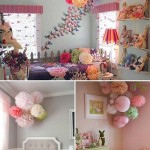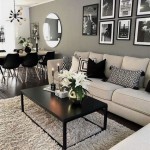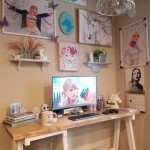Interior Decoration For A Living Room
The living room often serves as the heart of a home, a space for relaxation, entertainment, and connection. Thoughtful interior decoration can transform this central area into a haven that reflects personal style while maintaining functionality. Understanding the principles of design and incorporating key elements can elevate a living room from simply a space to a curated experience.
Establishing a Focal Point
A focal point anchors the room and provides a visual starting point for the eye. This could be an architectural feature like a fireplace or a large window with a captivating view. Alternatively, a strategically placed piece of furniture, such as a striking sofa or an eye-catching piece of artwork, can serve as the room's focal point. Once established, the remaining furniture and décor elements can be arranged to complement and enhance this central element.
When selecting a focal point, consider the room's existing features and the desired atmosphere. A fireplace naturally draws attention and creates a cozy ambiance, while a large window emphasizes natural light and the outdoor scenery. If the room lacks a natural focal point, a carefully chosen piece of furniture or artwork can achieve the same effect, adding personality and visual interest.
Furniture Arrangement and Flow
The arrangement of furniture significantly impacts the functionality and flow of a living room. Consider the traffic patterns and how people will move through the space. Furniture should be arranged to facilitate conversation and create a sense of intimacy while allowing for easy navigation. Avoid blocking pathways or creating awkward corners.
Creating conversation areas is crucial for a welcoming living room. Position seating around the focal point, ensuring that individuals can comfortably interact with each other. Utilize rugs to define these areas and anchor the furniture visually. Leave enough space between furniture pieces to allow for comfortable movement.
The scale and proportion of furniture are essential considerations. In a smaller living room, opt for furniture that is appropriately sized for the space. Oversized pieces can overwhelm the room, while undersized pieces can appear lost. Aim for a balanced arrangement that maximizes space and functionality.
Color Palette and Textures
The color palette sets the mood and tone of the living room. A cohesive color scheme creates a sense of harmony and visual appeal. Consider the room's natural light exposure when selecting colors. Light, neutral colors can make a room feel larger and brighter, while darker, richer colors can create a more intimate and cozy atmosphere. Incorporating accent colors through accessories and textiles adds depth and visual interest.
Texture plays a crucial role in adding depth and dimension to a living room. Layering different textures creates a rich and inviting environment. Incorporate a variety of materials, such as plush velvet, woven linen, smooth leather, and natural wood. This interplay of textures adds visual interest and tactile appeal.
Textiles, including curtains, rugs, throw pillows, and blankets, offer opportunities to introduce color, pattern, and texture. Choose textiles that complement the overall color scheme and add visual interest. Consider the room's style and function when selecting textiles. For example, a formal living room might benefit from elegant silk drapes, while a more casual space might feature comfortable cotton throws.
Lighting Considerations
Effective lighting is essential for creating a functional and welcoming living room. Layering different types of lighting provides both ambient and task lighting. Ambient lighting provides overall illumination for the space, while task lighting is focused on specific areas for activities like reading or working.
Natural light is a valuable asset in any living room. Maximize natural light by avoiding heavy window treatments and strategically placing mirrors to reflect light throughout the room. Incorporate artificial lighting to supplement natural light and create a warm and inviting ambiance in the evening.
Utilize a combination of overhead lighting, floor lamps, and table lamps to create a layered lighting scheme. Dimmer switches allow for adjusting the light intensity to suit different moods and activities. Consider the placement of lighting fixtures to ensure adequate illumination for all areas of the room.
Accessorizing and Personalizing the Space
Accessories are the finishing touches that add personality and style to a living room. Incorporate decorative objects, artwork, and personal mementos to create a space that reflects individual interests and tastes. Choose accessories that complement the overall design scheme and add visual interest without cluttering the space.
Artwork can add personality and create a focal point in a living room. Select pieces that resonate with personal preferences and complement the room's color scheme and style. Consider the scale of the artwork and its placement in relation to other furniture and décor elements.
Personal mementos, such as family photos, travel souvenirs, and cherished objects, add a sense of warmth and individuality to a living room. Display these items in a thoughtful and organized manner to avoid creating a cluttered or overwhelming feel. Consider using shelves, shadow boxes, or decorative trays to showcase these personal touches.

100 Living Room Interior Designs Designcafe

25 Living Room Interior Design Ideas Havenly Apartment Styles Home
Interior Designers Reveal The Mistakes You Re Making In A Living Room

15 Latest Drawing Room Design Ideas Designcafe

75 Beautiful Living Room Ideas For Decorating Inspiration

8 Luxurious Living Room Interior Design Ideas For Inspiration Décor Aid

30 Living Room Color Ideas Best Paint Decor Colors For Rooms

Beautiful Living Rooms Designs Ideas 10 Unique And Easy Design For

50 Inspirational Living Room Ideas Design

90 Modern Living Room Ideas For The Ultimate Hangout Spot








